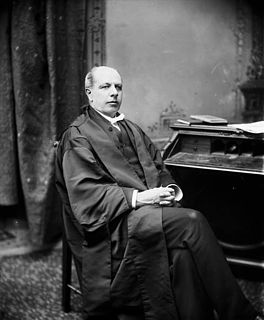
The House of Commons of Canada is a component of the Parliament of Canada, along with the sovereign and the Senate. The House of Commons currently meets in a temporary Commons chamber in the West Block of the parliament buildings on Parliament Hill in Ottawa, while the Centre Block, which houses the traditional Commons chamber, undergoes a ten-year renovation.

Parliamentary procedure is the body of rules, ethics and customs governing meetings and other operations of clubs, organizations, legislative bodies and other deliberative assemblies.

Royal assent is the method by which a monarch formally approves an act of the legislature. In some jurisdictions, royal assent is equivalent to promulgation, while in others that is a separate step. Under a modern constitutional monarchy royal assent is considered to be little more than a formality; even in those nations which still, in theory, permit the monarch to withhold assent to laws, the monarch almost never does so, save in a dire political emergency or upon the advice of their government. While the power to veto a law by withholding royal assent was once exercised often by European monarchs, such an occurrence has been very rare since the eighteenth century.
The United States Constitution provides that each "House may determine the Rules of its Proceedings," therefore each Congress of the United States, upon convening, approves its own governing rules of procedure. This clause has been interpreted by the courts to mean that a new Congress is not bound by the rules of proceedings of the previous Congress.
In the United Kingdom a hybrid bill is a government measure which affects a particular individual or organisation in a different manner to other individuals or companies in the same class; it thus bears some resemblance to a private bill. No definitive rules dictate whether a Bill is hybrid in substance; the decision is entrusted via the Speaker, to one or more House of Commons officials designated as the 'Examiners of petitions for Private Bills'. It is thus possible that a government unexpectedly finds itself promoting a private measure, upsetting its planned legislative timetable.

Sir John George Bourinot, was a Canadian journalist, historian, and civil servant, sole author of the first Canadian effort in 1884 to document Parliamentary Procedure and Practice, and remembered as an expert in parliamentary procedure and constitutional law.
In law, sub judice, Latin for "under a judge", means that a particular case or matter is under trial or being considered by a judge or court. The term may be used synonymously with "the present case" or "the case at bar" by some lawyers.
Charles Beverley "Bev" Koester, was a Canadian naval officer, civil servant and Clerk of the House of Commons of Canada.
The Clerk of the Parliaments is the chief clerk of the House of Lords in the Parliament of the United Kingdom. The position has existed since at least 1315, and duties include preparing the minutes of Lords proceedings, advising on proper parliamentary procedure and pronouncing the Royal Assent. Many of the Clerk's duties are now fulfilled by his deputies and the Clerk of the Parliaments' Office.

A Manual of Parliamentary Practice for the Use of the Senate of the United States, written by Thomas Jefferson in 1801, is the first American book on parliamentary procedure. As Vice President of the United States, Jefferson served as the Senate's presiding officer from 1797 to 1801. Throughout these four years, Jefferson worked on various texts and, in early 1800, started to assemble them into a single manuscript for the Senate's use. In December 1800 he delivered his manuscript to printer Samuel Harrison Smith, who delivered the final product to Jefferson on 27 February 1801. Later, the House of Representatives also adopted the Manual for use in its chamber.
The Newfoundland and Labrador Youth Parliament (NLYP) is one of a number of provincial youth model parliaments across Canada.
Robert Marleau, is a former Canadian federal public servant and former Information Commissioner of Canada. Beginning in 1970, Marleau served 31 years in the Parliament of Canada, 13 of which were as the Clerk of the House of Commons from July 1987 to July 2000. From July 2000 until his retirement at the end of January 2001, he served as Senior Advisor to the Speaker of the House of Commons.
The history of parliamentary procedure refers to the origins and evolution of parliamentary law used by deliberative assemblies.
Bourinot's Rules of Order is a Canadian parliamentary authority originally published in 1894 by Sir John George Bourinot, Clerk of the House of Commons of Canada under the title A Canadian Manual on the Procedure at Meetings of Shareholders and Directors of Companies, Conventions, Societies, and Public Assemblies generally. The title page states that it is an abridgement of the author's larger work, but it should be seen as a shorter re-write, dealing in considerable depth with public meetings outside and separate from the Parliament in Ottawa. The fourth, posthumous, edition of the work was given the cover title of the present article. The document is widely used in Canada to set procedures for formal meetings in government, companies and other organizations.

Erskine May is a parliamentary authority originally written by British constitutional theorist and Clerk of the House of Commons, Thomas Erskine May.
The Parliamentary Examiners are a group of legal experts charged with deciding whether a bill placed before the Parliament of the United Kingdom is a public, private or hybrid bill.






